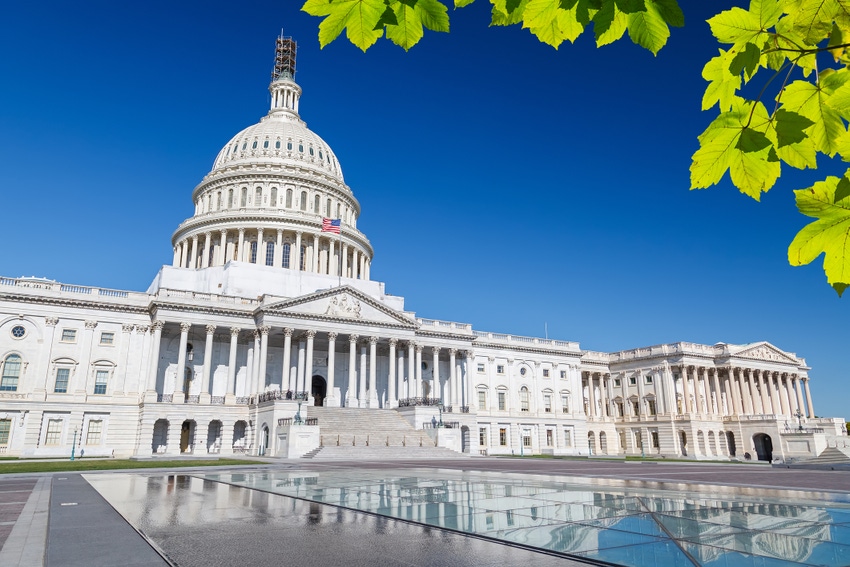Senate’s HEALS Act vs. House’s HEROES Act
Here's how COVID-19 aid packages compare when it comes to helping agriculture industry.

Just before Congress takes its August recess (Aug. 7 for the Senate and Aug. 3 for the House), Senate Republicans proposed a coronavirus relief package July 27 known as the Health, Economic Assistance, Liability Protection & Schools (HEALS) Act that would give the U.S. Department of Agriculture broad authority to spend an additional $20 billion to compensate farmers and processors for the impact of the pandemic.
In line with the Coronavirus Aid, Relief & Economic Security (CARES) Act, which provided $23.5 billion in funding for agricultural relief efforts, the HEALS Act appropriates $20.457 billion -- slightly more than 2% of total spending in the bill -- for additional COVID-19 relief for agriculture. Notable additions in terms of commodity support are independent and contract poultry growers and processors of agricultural products, which could be interpreted to include biofuel (ethanol) producers and textile mills, such as domestic users of cotton.
The money would augment the $14 billion that USDA now has available to spend in the Commodity Credit Corp. (CCC) as a result of the CARES Act, which was passed by Congress with overwhelming, bipartisan support and signed into law by President Donald Trump on March 27. The legislation provides $20 billion in direct funding, which, when combined with the $14 billion replenishment of CCC secured in the original CARES Act, will provide USDA with $34 billion in funding to assist producers.
John Newton, economist at the American Farm Bureau Federation, said, “Given the broad authority associated with the $20 billion in support provided in the HEALS Act, it’s expected that USDA will now be able to create financial assistance programs for producers who have yet to receive support under the Coronavirus Food Assistance Program, such as independent and contract poultry growers, contract hog producers, producers who had to depopulate animals due to lack of processing capacity, textile mills such as domestic users of cotton and biofuel producers. It’s also expected that 2020 crops impacted by COVID-19-related demand destruction, e.g., new-crop corn, cotton, soybeans and wheat, will be included in any additional support crafted by the department.”
The HEALS Act is a combination of individual measures such as forgiveness of all Paycheck Protection Program loans under $150,000 without farmers and other borrowers having to prove that they spent the proceeds on allowable expenses.
The House’s initial proposal for its fourth round of funding came in at a total of $4 trillion, whereas the Senate rolled back that to $1 trillion as it heads into what is anticipated to be another round of divisive negotiations between Republicans and Democrats.
Newton noted that the Health & Economic Recovery Omnibus Emergency Solutions (HEROES) Act contains considerably more detail on what the funding is for, such as prescribing payment rates and the methodology for funding depopulation indemnities and agricultural processors such as textile mills and ethanol plants or the expansion of conservation set-aside programs, while the HEALS Act excludes an expansion of the Soil Health & Income Protection Program cropland set-aside program and is more broadly written, allowing USDA more discretion on how the support should be distributed.
Newton went on to explain that the HEALS Act specifically includes language providing support to “livestock and poultry depopulated due to insufficient processing access,” while the HEROES Act directs the agriculture secretary to make payments to covered producers to offset losses related to the intentional depopulation of market-ready livestock and poultry due to insufficient regional processing access. For the first month following an initial date set by the secretary, the payment rate will reimburse a producer for 85% of the losses determined by the secretary. For each subsequent 30-day period, the payment rate will decline by 10% of the value of the losses.
“Given the broad language in the HEALS Act, support to biofuels producers and textile mills could potentially be another area where the bills agree,” Newton said.
The broad language under HEALS could extend some of the $20 billion allocated to the secretary to these two sectors. The HEROES Act more specifically spells out the support offered to these sectors, including direct assistance to the biofuels industry through the Renewable Fuel Reimbursement Program.
Any entity or facility that produced renewable fuel or advanced biofuel in 2019, including corn starch ethanol, is qualified to receive a direct payment of 45 cents/gal. of fuel produced between Jan. 1, 2020, and May 1, 2020. If the facility idled production during this period, it is eligible to receive 22.5 cents/gal. for the amount produced during the same time period in 2019.
“While the HEALS and HEROES acts arrive at the same destination in terms of support for poultry, producers who had to depopulate animals, biofuel and textile processors, the HEROES Act is much more prescriptive, with provisions that single out support for dairy processors and dairy producers, and provides for a massive expansion of the 2018 farm bill’s Soil Health & Income Protection Program,” Newton concluded.
At the end of the day, many provisions in the House and the Senate are similar in relation to the support offered to agriculture. However, the Senate’s version provides more latitude for the secretary of agriculture to make those choices.
Bridging the divide between the HEALS and HEROES acts is likely to extend into August, but it does appear that more support is on the way for those in agriculture.
About the Author(s)
You May Also Like





